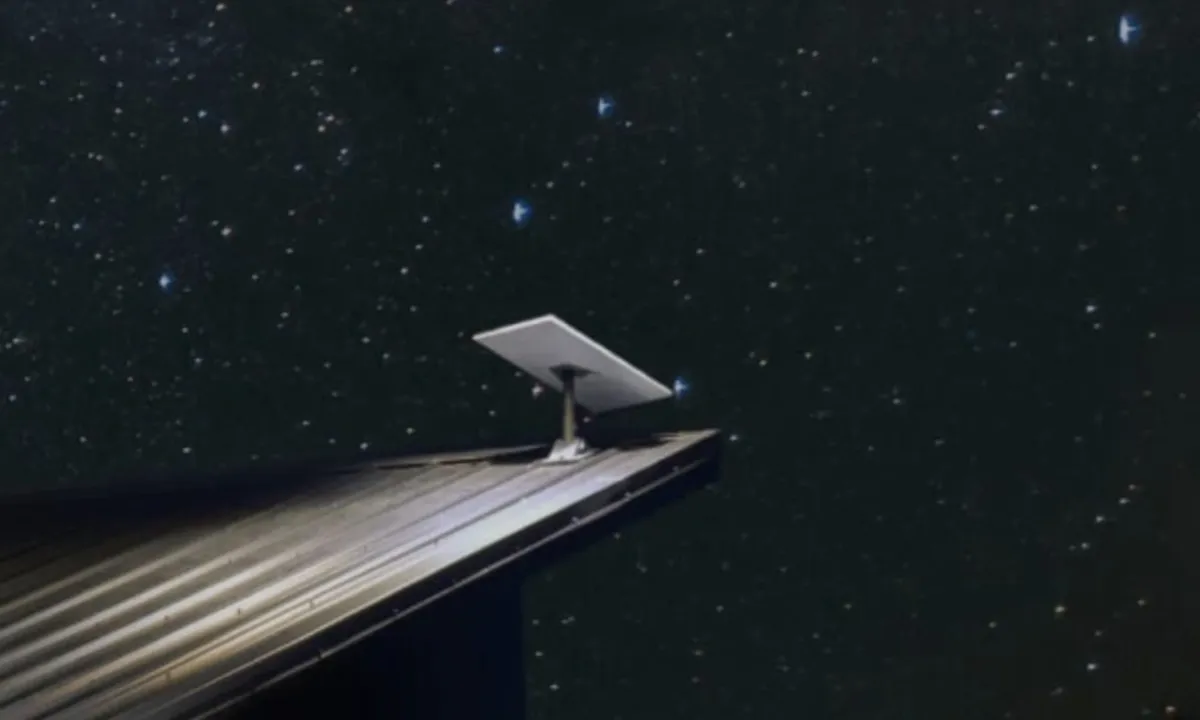
SpaceX achieved a remarkable milestone by completing its 100th Starlink mission of the year on Friday, October 31, 2025. This significant event took place when a Falcon 9 rocket successfully launched from the Vandenberg Space Force Base in California at 4:41 p.m. ET, carrying 28 Starlink broadband satellites into Low Earth Orbit (LEO).
Approximately 8.5 minutes after liftoff, the first stage of the Falcon 9 booster made a successful landing on the drone ship Of Course I Still Love You in the Pacific Ocean. This landing marked the booster’s 29th flight, bringing it closer to SpaceX’s reuse record of 31 missions. The latest launch adds to SpaceX's impressive tally of 138 Falcon 9 launches in 2025, with 99 of those missions dedicated to the Starlink project, as reported by Space.com.
The Starlink network continues its massive global expansion, now recognized as the largest active satellite constellation in history. With over 10,000 satellites launched, nearly 8,800 remain operational. Recently, SpaceX celebrated the achievement of launching its 10,000th Starlink satellite. With 100 Starlink missions completed in 2025, enthusiasts have noted that SpaceX has successfully deployed 2,554 Starlink satellites this year alone.
Starlink provides high-speed, low-latency internet connectivity, even reaching some of the world’s most remote areas. This technology has been life-changing for many individuals across the globe. Currently, Starlink operates in about 150 countries and boasts over 5 million subscribers worldwide, with 2.7 million new subscribers joining in the past year.
In related news, Tesla’s Full Self-Driving (FSD) V14 update for the Cybertruck could be released this weekend, according to Ashok Elluswamy, Director of Autopilot Software and VP of AI. Although there was an expectation for the FSD V14 update to arrive by the end of the month, Tesla missed that target.
Given the extended wait for this crucial update, many Cybertruck owners have been inquiring about its rollout. The official Cybertruck X account engaged with Elluswamy’s comments regarding the FSD update, humorously expressing frustration about the delay. In response, Elluswamy stated, “Sorry, pushing for early access Cyber release over the weekend,” raising hopes that Cybertruck owners may soon experience the FSD V14 update.
This upcoming Cybertruck update represents a significant step in Tesla's efforts to unify the Full Self-Driving experience across its vehicle lineup. FSD V14 introduces notable features like Mad Max mode, which has received positive feedback from long-time testers of the Full Self-Driving system.
Tesla has also launched a new initiative called the Tesla Ride program, designed to familiarize commuters with its Full Self-Driving technology. This program offers supervised FSD demonstrations and AI-guided experiences during real-world trips.
According to the official Tesla Ride website, participants can sit in the driver’s seat while a Tesla Advisor accompanies them as a co-pilot. This advisor guides riders through the latest features of Tesla's FSD technology, comfort settings, and in-car entertainment options. Additionally, participants can interact with Grok AI, which is capable of answering questions and telling stories during the ride. Each Tesla Ride session is limited to 45 minutes and requires participants to hold a valid driver’s license and insurance.
The Tesla Ride program is available in several markets from October through November, extending in some locations until the end of December 2025. Participating states include Michigan, Virginia, Illinois, Nevada, and California. Tesla’s cautious approach is evident on the official webpage for Tesla Ride, where disclaimers clarify that FSD Supervised does not equate to full autonomy just yet.
Safety remains a priority for Tesla's FSD technology, as highlighted by Senior Vice President for Automotive Tom Zhu. He emphasized that the primary directive for the autopilot system is to minimize the probability of impacts while ensuring a comfortable journey.
In other news, Tesla's Robotaxi pilot program is still in its early stages, but CEO Elon Musk has hinted at significant updates. During a recent podcast, he discussed plans to expand the Robotaxi fleet in Austin to 500 units and in the Bay Area to 1,000 units by the end of 2025.
Musk has made it clear that the FSD and Robotaxi networks are crucial to Tesla's future valuation. He expressed optimism during the third quarter earnings call, stating that the company expects to operate without safety drivers in significant parts of Austin by the end of the year, indicating a cautious yet progressive approach to deployment.